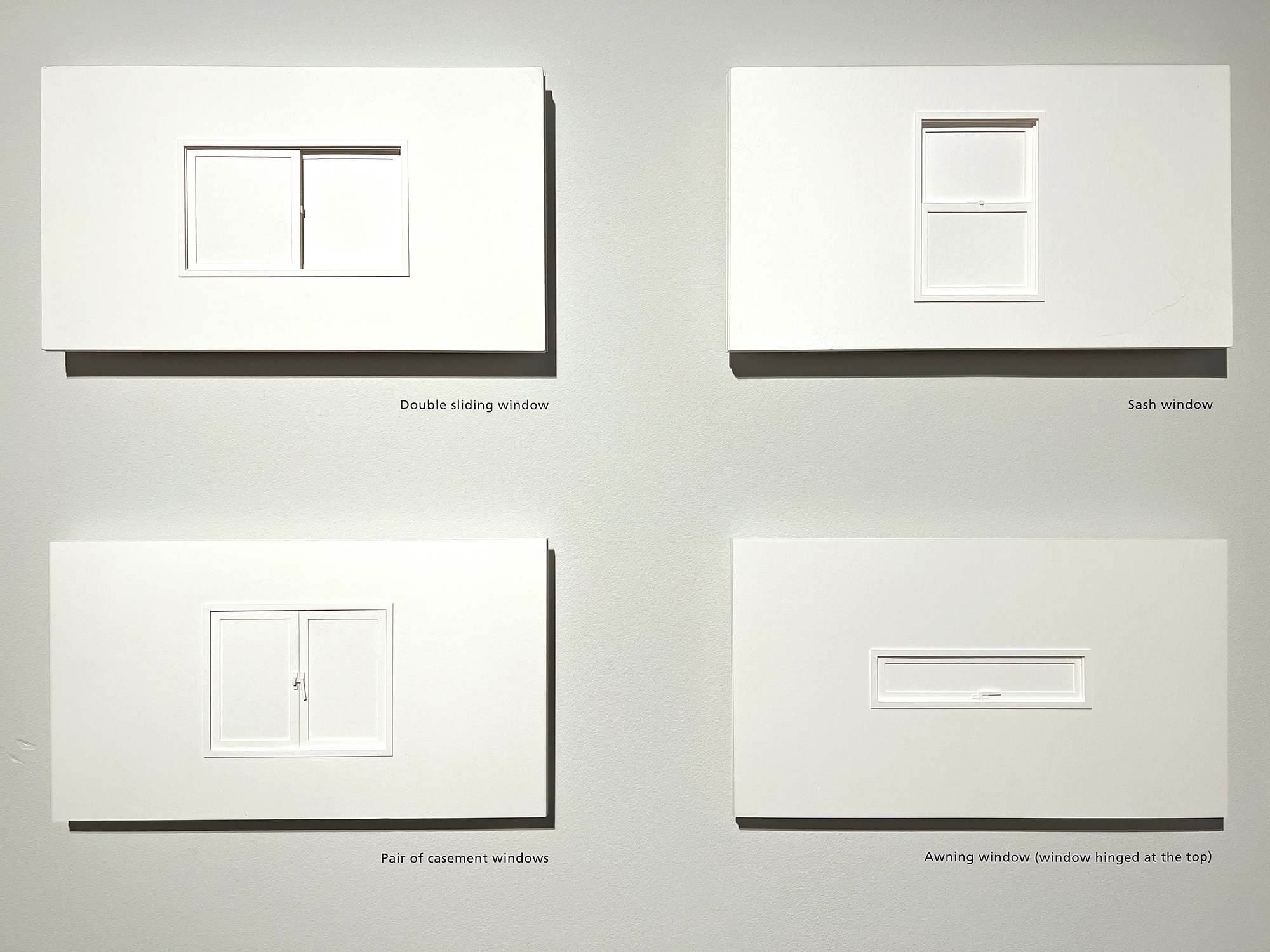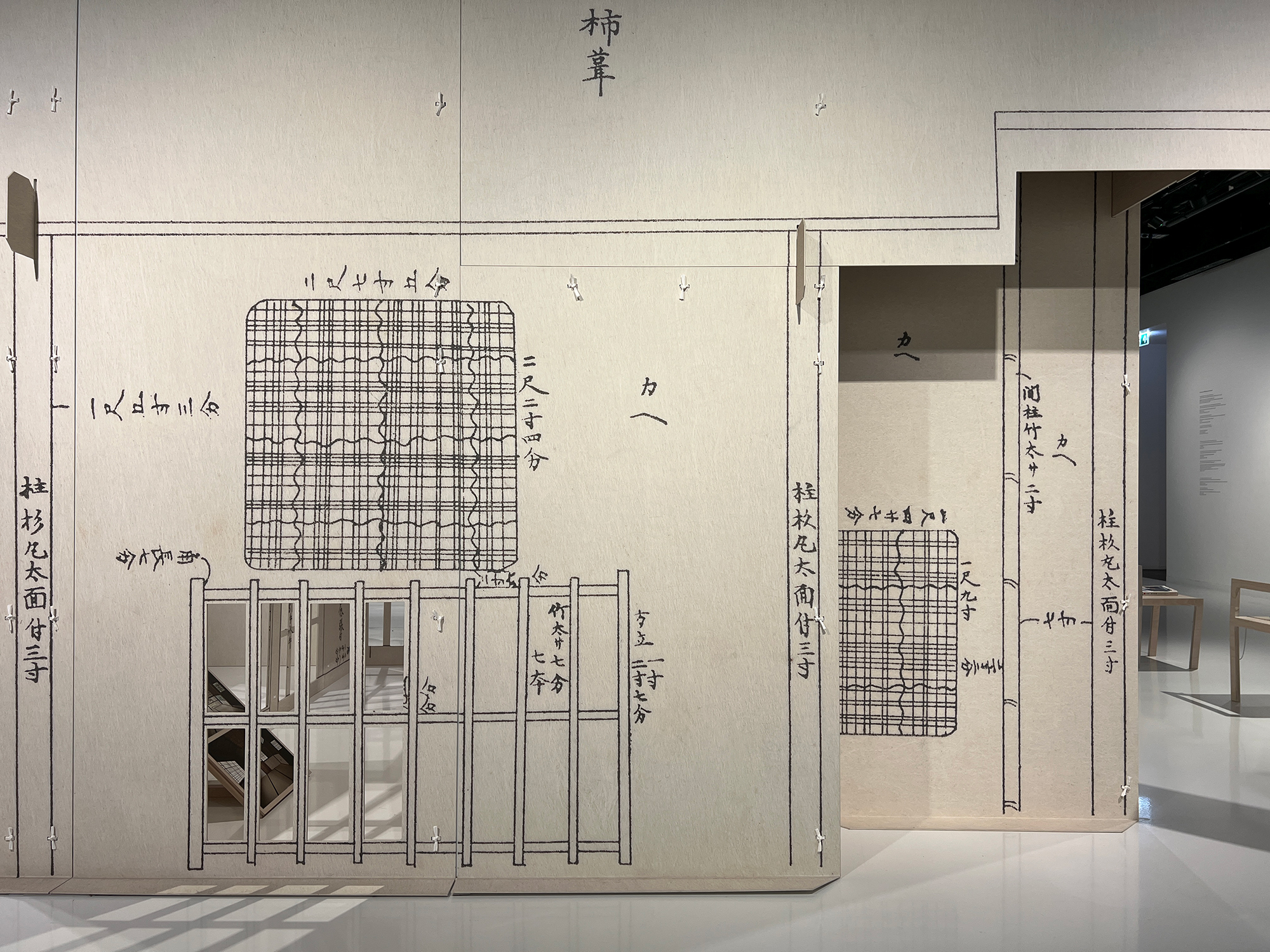Windowology
7.3.22My abstraction of building shapes for Model Village has involved a balance of stripping away as much detail as possible while retaining their recognisable proportions. Windows were an early element to be removed for they were also an unwanted indicator of scale. However, the need for patching with recycled denim has enabled me to use it as a form of suggesting the presence of windows.
With this in mind I visit Windowology1 at Japan House, an exhibition described as one which explores windows as cultural objects2.
With this in mind I visit Windowology1 at Japan House, an exhibition described as one which explores windows as cultural objects2.


The exhibition compares the intrique of moveable windows and wall-less interiors found in Japanese architecture with those of other cultures in which windows are generally holes in masonry walls of stone and brick. Japanese teahouses, however, are conceived as closed boxes ‘punctured with an assortment of openings’4 and for this they hold a special place in Japanese culture.




Windowology’s centrepiece is a 1:1 scale 3D installation of the sketched design of a teahouse, surrounded by other smaller scale models.
It brings to mind my 2018 visit to the Mori Art Museum, Tokyo, in which the 16th century Tai-an teahouse5, a national treasure, was on display. The height of its nijiri-guchi (wriggling-in entrance) was determined by the minimal space needed for a person to duck under, emphasizing the threshold between the outside and inside worlds.
It brings to mind my 2018 visit to the Mori Art Museum, Tokyo, in which the 16th century Tai-an teahouse5, a national treasure, was on display. The height of its nijiri-guchi (wriggling-in entrance) was determined by the minimal space needed for a person to duck under, emphasizing the threshold between the outside and inside worlds.

Tai-an teahouse (1581) at the Mori Art Museum, Tokyo (2018).
All pictures by P Hartley unless otherwise specified.
1The Windowology ehibition had been due to open in Spring 2020 but was delayed due to the COVID-19 pandemic.
2Lekka Angelopoulou, S. (2020) Windowology Exhibition at Japan House Explores Windows as Cultural Objects in Architecture, designboom.com.
3Windowology picture by Takumi Oita Photography Co.
4Igarashi, T. (2022[2020]) Windowology: New Architectural Views from Japan, japanhouselondon.uk
5The Tai-an teahouse is from the Myōki-an temple in Yamazaki, Kyoto, and attributed to Sen-no-Rikyu).